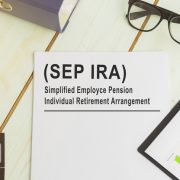How Does a Self-Directed SEP IRA Work?
You might be familiar with how retirement accounts work. But if you have self-employment income, you might find the new bevy of options available to you to be a bit…confusing, to say the least. Something like a Self-Directed SEP IRA seems promising as a way to put money aside for retirement, sure. But it also seems like something reserved for only very sophisticated financial professionals. The good news? It doesn’t have to be. Let’s review some of the basic questions about how Self-Directed SEP IRAs work so you can get a better handle on how to manage these accounts if you decide to open one for yourself.
Who Can Establish a Self-Directed SEP IRA?
The answer: anyone who employs. If you’re self-employed, that still counts, as you’re considered the employer in a self-employer situation. You simply need self-employment income to justify a SEP IRA.
What Does Self-Direction Mean?
A Self-Directed SEP IRA means that you’re taking control of the account’s investments yourself, typically working with a Self-Directed IRA administration firm who serves as the custodian of the account. This is someone who can help facilitate the transactions you’d like to carry out. If your SEP IRA is self-directed, you can invest in a wide range of potential retirement assets, which can include just about anything from real estate to private companies. However, you will also be responsible for what goes on with your Self-Directed SEP IRA.
What If I Have Another Job?
According to the IRS, “You can maintain both a SEP and another plan. However, unless the other plan is also a SEP, you cannot use Form 5305-SEP; you must adopt either a prototype SEP or an individually designed SEP.” This means that you can indeed keep a SEP IRA along with another plan, but you will have to make sure that you establish it in the proper way.
What Are the Advantages of a SEP IRA?
SEP IRAs are typically easy to manage and set up, which gives people who are self-employed an opportunity to start planning for retirement. They also have low administrative costs, which makes them low maintenance for a lot of people who are otherwise busy procuring that self-employment income!
There are also flexible contributions available through a Self-Directed SEP IRA, which means that you can vary the contributions, so long as employees get the same contributions. If you’re the only employee at your company—i.e., you’re self-employed in a company of one—this is very easy to maintain.
Another key advantage is that SEP IRAs have high contribution limits, which is advantageous for anyone who has a lucrative self-employment gig and wants to set aside as much money towards retirement as possible.
What are the Disadvantages of a SEP IRA?
If you have a company with multiple employees, you can’t contribute more to your SEP IRA than you do to the other employees there, which can limit your options if you have a growing company. Sometimes, investors seek out SIMPLE IRAs for small businesses as well.
Should You Seek Out a SEP IRA?
A SEP IRA can be a powerful way to invest for retirement. But like any tool for retirement, it’s best wielded if you know how to use it. That means brushing up on how a Self-Directed SEP IRA works, how to set one up, and what it might look like if you were to use one in your situation.
Interested in learning more about Self-Directed IRAs? Contact American IRA, LLC at 866-7500-IRA (472) for a free consultation. Download our free guides or visit us online at www.AmericanIRA.com.











